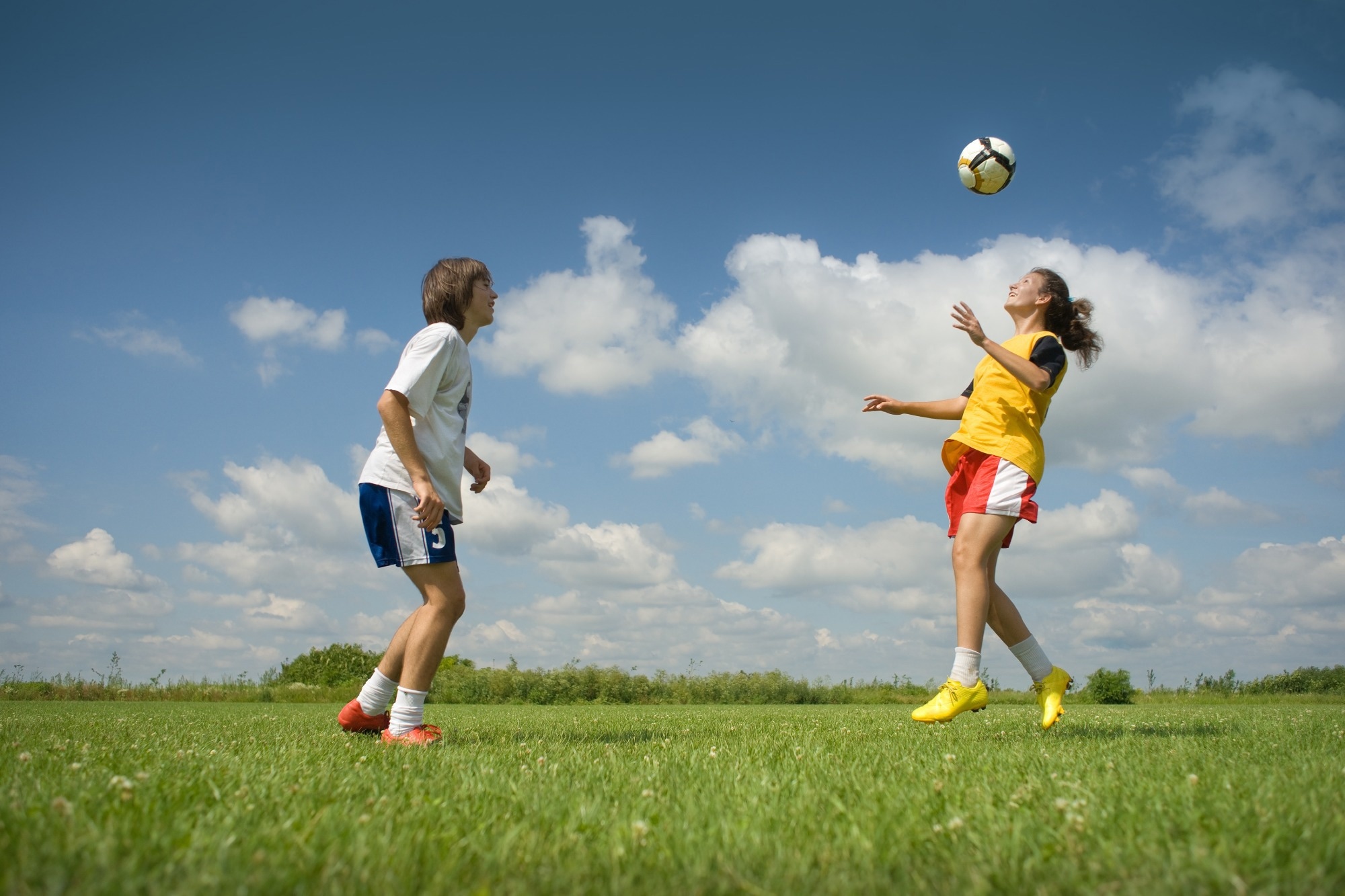A new study reveals that while routine heading in women’s football doesn’t affect balance, it subtly alters fine motor function, raising questions about the game's neurological toll.
 Study: The effect of football (soccer) heading on gross and fine motor control in women. Image credit: Fotokostic/Shutterstock.com
Study: The effect of football (soccer) heading on gross and fine motor control in women. Image credit: Fotokostic/Shutterstock.com
Women exposed to various header shots in a typical football match may not experience gross motor control impairment, but rather subtle, acute changes in motor-cognitive functions. A recent Frontiers in Sports and Active Living study evaluates the effects of football heading on gross and fine motor control among women footballers.
What are the risks associated with heading in a football match?
In football, also known as soccer, heading is a relatively common and essential shot contributing to approximately 32.5% of contestable goals scored at the 2022 Women's World Cup. The average impact forces experienced by a player during heading are below established thresholds for brain injury.
Previous studies have revealed that repeated head injuries could increase the risk of neurodegenerative diseases; however, more research is required to establish causality. In one instance, after a “standard” bout of football heading, a player exhibited immediate and measurable adverse effects, such as increased corticomotor inhibition and reduced memory function. Therefore, it is essential to comprehend both the immediate and long-term effects of sport-related head impacts on brain function.
Motor control assessments evaluate an individual’s capacity to regulate and coordinate movements to achieve a specific task. Scientists have used this approach to assess the neurological changes following head impacts. Gross motor control is evaluated based on the form of standing balance. This assessment is based on the principle that standing balance relies on a complex interplay of mechanisms, including cortical and subcortical pathways.
Previous studies have presented contradictory results on the association between football heading and standing balance. For instance, some studies have shown impaired standing balance following heading, while others have recorded no significant changes. In comparison to male athletes, MRI analysis has shown that female athletes are more prone to undergo negative changes in white matter microstructure following football heading. As a result, researchers are more interested in understanding the effects of football heading on the brain function of female athletes.
Fine motor skills are used to assess brain function following heading. Individuals without a history of concussion perform significantly better in precision grip tasks than those who have previously experienced a concussion. Amidst the contradictory results, it is essential to determine whether heading influences the cognitive functions of female footballers.
About the study
Nineteen female football players, including ten defenders, five midfielders, and four forwards, were initially recruited from the University of Exeter Football team. The average age of the participants was 21, with approximately 11 years of playing experience. These participants were screened according to the eligibility criteria.
After familiarizing the participants with testing protocols, they were invited to the laboratory for data collection associated with a heading protocol or a control condition, which was performed in a counterbalanced order. The heading protocol was developed to replicate the match-play heading frequency, i.e., participants heading an official size 5 UEFA Women's Champions League football, launched six times every hour by a motorized ball launcher positioned 15 meters away. Considering previous literature recommendations, a ball velocity of 40 ± 5 km/h was selected to reflect match play heading intensity.
During the control condition, participants were asked to remain seated and rest for one hour. After completing the heading protocol or the control condition, they underwent cardiovascular assessments, followed by the balance and grip force tasks.
Participants completed the precision finger grip test (PFG) in the full vision (FV) and non-vision (NV) trials. All participants completed one FV, followed by two NV trials. The balance task required participants to stand in a double-leg stance with their hands on their hips, and data were collected under two conditions: eyes open and eyes closed.
Study findings
The current study observed that the heading intervention induced a statistically significant decrease in oscillations in force production (OFP) tremor frequency in the 0-4 Hz band for the NV PFG (p = 0.03), while the control condition resulted in an increase in OFP in the 0-4 Hz band.
Following the heading intervention, no significant change in gross motor control regarding standing balance was observed. A higher value in the balance test centre of Pressure (CoP) sway velocity, and the range of motion (ROM) in the mediolateral (ML) and anterior-posterior (AP) directions resulted in the eyes-closed condition for both intervention and control conditions.
In contrast to the control condition, a significant difference in tremor frequency of precision grip was observed after the heading protocol. This medium effect size (Cohen’s d = -0.53) suggests an altered motor control strategy.
Conclusions and future outlook
The current study indicated that a realistic number of headers at a standard ball speed in women’s football games did not exhibit any change in gross motor control. However, as per a precision gripping task, heading might have induced a change in fine motor control. These studies should also account for whether observed changes are due to heading itself or confounded by exercise-related fatigue or effort.
In the future, more research must be conducted to evaluate the effect of a wider range of realistic ball velocities, beyond ~40 km/h, on acute neurological and physiological function in women's football. Furthermore, longitudinal studies must be conducted to assess the effect of heading on fine motor control. Scientists should consider brain imaging and electrophysiological measures to uncover the mechanisms underlying changes in fine motor control performance after heading a ball. The authors also noted that the absence of neuroimaging in the current study limits the ability to determine which brain regions may be responsible for observed motor changes.
Download your PDF copy now!